We talked with Palestinian photojournalist Hosam Salem about the daily life in Gaza.
Palestinian photojournalist Hosam Salem, living in Turkey since 11 months, had decided to quit school and work as a photojournalist after studying Computer Engineering for three years, and worked in various international agencies for eleven years now. Hosam says "I lived in Gaza for 30 years, and isolated city for Palestinian people, because I cannot travel from Gaza, for example, to the West Bank or elsewhere" about his life in Gaza. Hosam also mentioned that he continues doing his job in Turkey. He has been doing projects for international organizations, and making videos for help organizations who aimed to provide help for the refugee camps at the Syrian border.
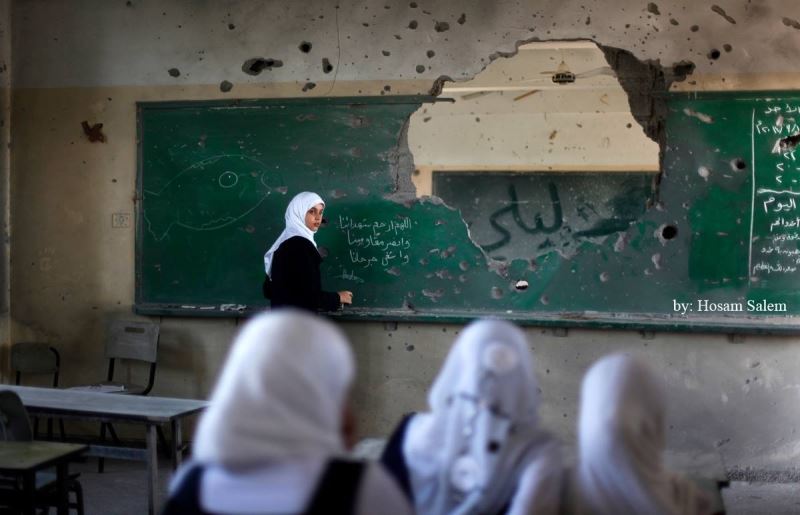
Photographs can sometimes be stronger than text. We continued our conversation with the idea that ”sometimes a photograph can end a war”. Stating that the photos have a different power and texture, Hosam said, “The photos have a strong and powerful effect. I agree that a photo can end the war. Because I started by taking photos of war, taking up the daily life in Gaza, the battlefield. So photography is a way to show the world this landscape. For example, one of the photos I selected won an award, a photo of a man whose entire family was killed in a massive massacre, very touching. A photo can depict emotions and show how it is to live in a war zone..
I show the hope of the Palestinians
Hosam Salem said that people in Gaza have a passion for life and that they are trying to show the world that they are being treated unjustly: People in Gaza love life. They have a passion for life. And they try to send the message the world that they're still alive, moving on, but under the circumstances that human should not be living. When I’m taking these pictures, I am also the part of them. Because I’m also living in Gaza I’ve seen all these situations but I’m trying to take it to the general public and international level. I don’t show pictures of blood or this kind of things that people don’t want to look at, but also trying to show the reality and the humanitarian situation at Gaza for people to feel not exactly sympathy but to understand that there are people treated unfairly and living under a war they don’t deserve. We like to show people that we love life but at the same time it’s not something we have a in hand. In these photos we see that they’re sad but have hope.
Being a refugee in your own country
When Hosam mentioned that he was a refugee in Gaza and lived in a refugee camp, Hosam's friend Ikhlas Nobani explained the refugee situation in Palestine as follows: "There are refugee camps inside Palestine, and outside such as Syria, Lubnan, Jordan, and other countries. But inside Palestine, some people used to live at what so-called now Israel. Which we call 48 land. The area of cities such as Hayfa, Akka etc. They are coast cities and they are in the Mediterranean exactly. Those people on 1948-1967 they moved around Palestine. Some of them went to Batı Şeria and they have refugee camps. They first lived in tents but then thanks to the help organizations like UNRWA, they are allowed to build houses. These organizations rent lands for refugees and they live in the tents for a while but after they start to work and move on, they build houses. But these houses are very crowded and very close to each other. Hosam is a refugee in Gaza because his original city is an area in the border of Israel, so he left his city where is a settlement of Israel now. So saying that you’re a refugee in Palestine is a big thing, because it’s your identity. It means someone pushed you out from your country, your city and you’re not accepting that. They show their refusal by saying that they’re a refugee in these camps, and they have a target to go back to their homeland eventually. "
My photos are my way of fighting
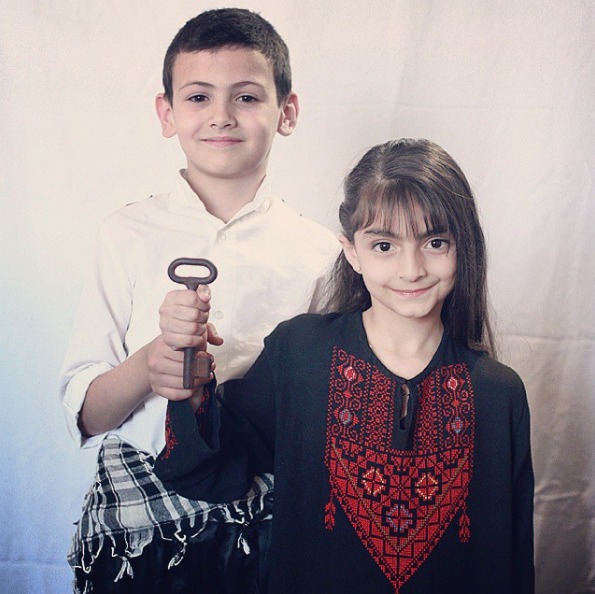
Hosam describes the photo he took in Gaza as follows: "The key in the photograph is a symbol of the homeland. The photo is telling that the new generation has the key to their homeland and didn’t forget about what happened to their grandparents. Because of the humanitarian situation, I choose to show it by photographing. Because it’s my own life that I took pictures of. And Gaza called as the biggest prison on earth since 2 Million people living in 350 square kilometers. That’s how I strive against."
I live the same thing as the people I'm photographing
Hosam tells how he approach people's stories while photographing their lives and how it feels to photograph their pain. "These people’s suffering is the same thing I suffer from. For example, people can’t travel; I tried to travel 30 times outside of Gaza but had to turn back every time. I missed a lot of award ceremonies. So I live the same thing with these people that I photograph. I live in a city with no electricity, no good water, no health condition. Every day I wake up and say “I’m going back to Gaza” to myself. Even though I had the chance to leave Gaza, I travel around Turkey, I loved living in Istanbul, something big is missing. I always feel like “I have to go home” since it’s where I was born, where I live, where my family and friends are."
“Israeli soldiers intentionally killed Yasser”
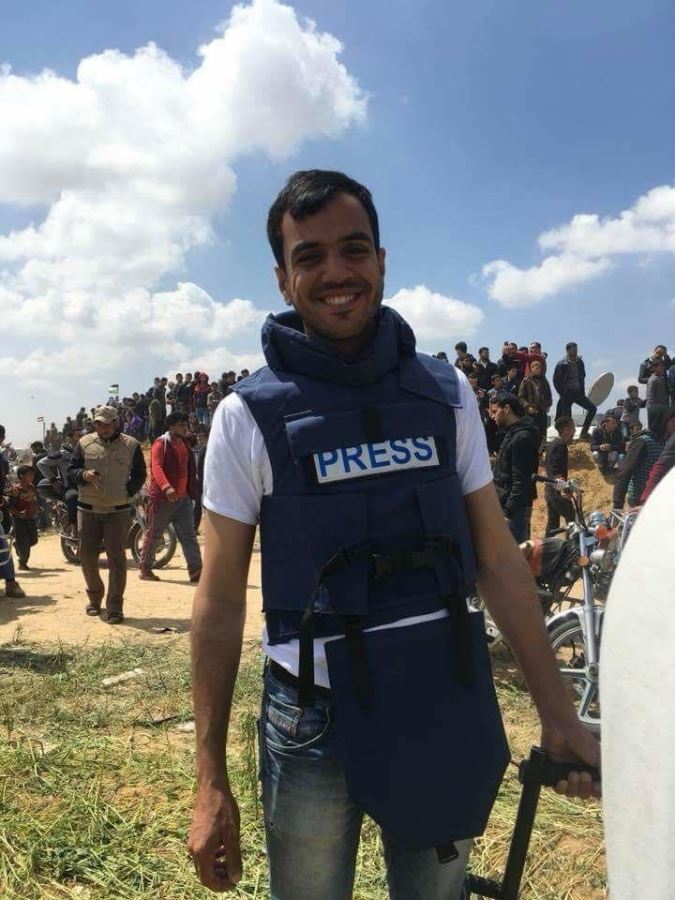
Hosam Salem lost his esteemed friend Yasser Murtaja, whom he worked with in Gaza. He explained how it felt to take photographs in war conditions: "We were working together when he got shot. Yaser was wearing a steel vest, written “Press” on it. Israeli soldiers killed him on purpose. I was in shock after what happened and I stopped working for 2 weeks. Then I started going back to the same area where my friend got killed and worked there. I was trying to show that, even though I’m sad, I lost a friend I’ll go back and show my pictures to the world. I went back to work because I want to continue to give the message of Yasser. Through his work, he was trying to show the world the suffering of Gaza. Because it feels like cheating if I stopped working, then what he did and died for would be for nothing."
We have the right to fight to the end
When we talked about the hope and resistance of the Gazans during the Great Return March protests in Gaza, Hosam said: "In my opinion, we’ll fight till the end because we have a right to do so. The conflict between Israel and Palestine is not a new thing, it’s been 70 years, and it’s not showing yet. Palestinians believe it’s their right to resist. As a photographer, I’m doing my job by taking the photographs of the protests and the Great March Return from that place. As long as this conflict exists, I’ll go and take photos of these protests of my people. It’s both my job and my fight."
He is preparing an exhibition for Palestinians
We talked about the fact that many villages have been occupied in Palestine for 48 years and one of them is Hosam's own village, and this situation is still going on. Describing his work for those staying in the war environment, he said: I met the people who lost their houses and left their villages, and I collected their stories there. They are in their 70s and 80s, they are very old but they still have hope. They still keep their documents and the keys of their houses. And those lands are no longer Palestine politically. It’s officially Israel and Israeli people are living there. There are also Palestinian people living there but other people call them “Arabs of Israel” as a sign of them not recognising them. They’re not accepting Palestinians’ identity by saying that they are Arab. I am planning to do a gallery, now I’m preparing the photographs. I’m planning to do many galleries in Ankara, Istanbul etc. I’m working on it for the permissions. By these galleries, I want to show the world the photos I took at the war zone.
Palestinian children are very mature
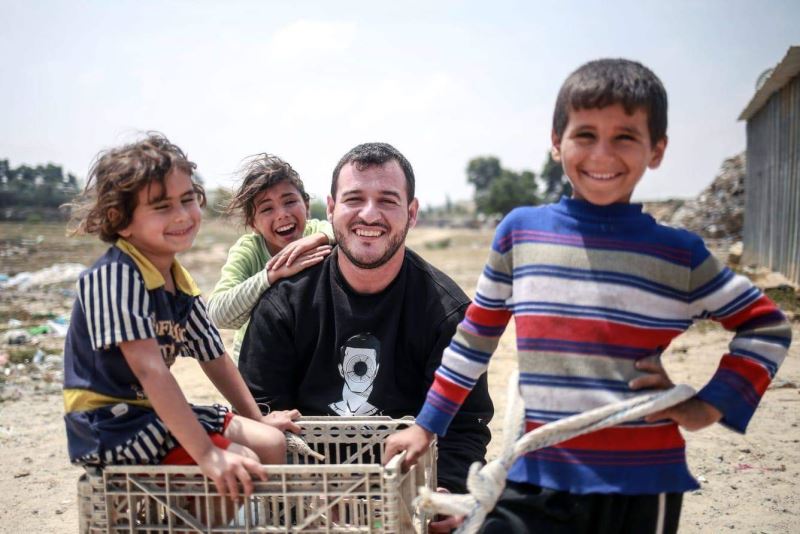
Children are the most victimized part of the war. We talked about Bediuzzaman Said Nursi's expression of "wars that make children old" for world wars. In this context, when we ask if a generation is missing, Hosam conveyed his observations about the children in the region: "I don’t believe that there is a lost generation. Palestinian children are very aware of what’s going on and they value their history. Every child knows exactly the dates of all wars, the places of their homes. And about the part of victimizing children, when Israel bombs the Gaza, they bomb the civil public. So they don’t care if there is a child or family. When they bomb, they bomb houses, they kill entire families. And Palestinian children are very like a grown-up. They know who the enemy is, they know what suffering is, and even if they’re kids they are aware of everything."
Children are the oldest members of their families
Ikhlas Nobani said that children in Palestine are different from other children, and continued: "I used to go to school, and there was a checkpoint between my home and school. So I used to see Israeli soldiers every morning. I know who they are. And they know who I am. Being a child, playing games, going to school they are normal things the Palestinian children do, but there is always the other part. The parts that other children don’t have... Lots of children lost their entire family. So they are the oldest person in their family, the only one who carries the family name. And they have to move on and become an older person even if they don’t want to they have to take responsibility."
Advices for young photographers

Hosam shared his feelings about the time when he won the young photojournalist award in 2017 with his photo of street training in Gaza and shared his recommendations to young friends as follows: "I was in a funeral in Gaza at the time I learned that I won the award. My friends called me and told me about it. I felt proud of winning this award among others. My advice for young journalists is, when they take a picture they should know it has a story to tell. And also, they should be sure about the pictures to be acceptable for others while trying to show humanitarian situations. Also by taking pictures, photographers should be helpful for those who are in the photographs. There should be an aftereffect of the photographs for these people."
Israeli soldiers take martyrs as hostages
Hosam said that they rush to protect the martyrs from Palestinian soldiers in Palestine."They are martyrs of Islam, we’re not supposed to touch them, wash them or anything else. We took them to the hospital to identify the person, after then we immediately take them to the graveyard. Also in Palestine, we don’t use coffins. Because we always burry them in a hurry since sometimes Israeli Soldiers steal the body and keep it. They don’t give it back to the family to burry unless you give them something in exchange. This hurry is kind of protection."
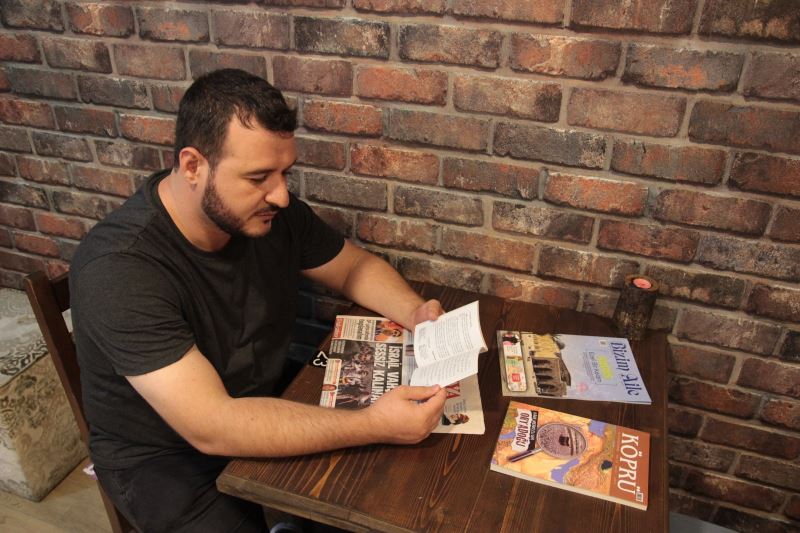
Hosam stated that Bediuzzaman's Arabic Hutbe-i Şamiye is a very valuable gift for him.
Süreyya Nur İşler - Feyzanur Elif Mutlu
[email protected]
[email protected]
Yeni Asya English